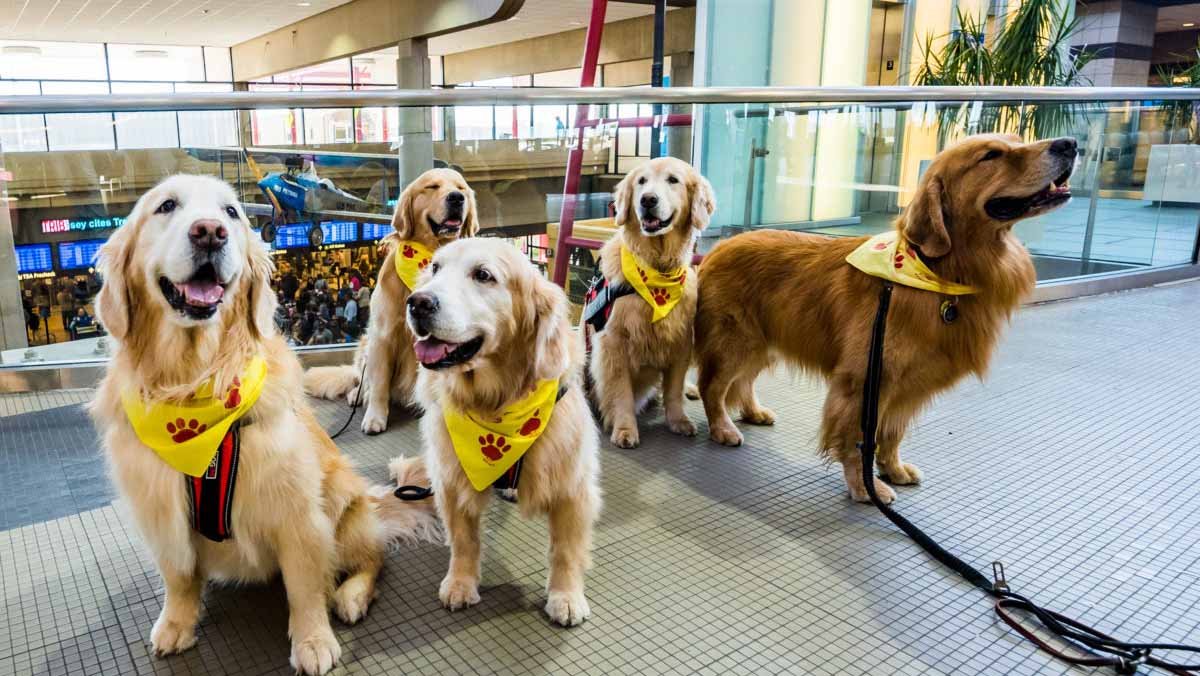Airports Seek Out Solutions to Minimize Stress in Holiday Travel
With Thanksgiving and Christmas just around the corner, airports are coming up with creative ways to help relieve passenger travel stress
October 31, 2019

Air travel, whether for business or pleasure, is here to stay and so is the hassle and stress that goes with it as passengers navigate through crowded US airports. From the mad dash for parking at the airport to the long lines at security checkpoints to navigating long crowded airport concourses air travel is not for the faint of heart.
Despite nearly a trillion dollars expected to be spent on airport construction and expansion projects over the next 10 years, things are going to get worse before they get better as the numbers of flights and passengers continue to increase, further straining airports’ capacity. More than 2.7 million passengers fly every day and airports are likely to see up to a 25 percent increase in passenger volume from late November through early January. This means that stress levels are turned up for both airport staff and travelers during the holiday season.
Some airports are taking steps to help manage stressful holiday travel. Tulsa International Airport recently launched a therapy dog program, dubbed the “Welcome Waggin.” Over 30 dogs rotate through the airport’s terminals and concourses with the mission of interacting with travelers to help ease travel tension and improve the overall airport experience. Other airports have put similar programs in place — Denver’s Canine Airport Therapy Squad or “CATS” is made up of over 100 dogs, one cat of more than 40 different breeds that greet passengers in blue plaid “Pet Me” vests.
Pittsburgh International Airport and Manchester-Boston Regional Airport are among the first airports that are relying on Artificial Intelligence (AI) to reduce the stress of the holiday rush. With systems developed by Zensors, a Carnegie Mellon University startup, airports can provide travelers with real-time wait estimates at Transportation Security Administration (TSA) checkpoints to give passengers an idea of how much time they can expect to wait in the security queue. Passengers can access security wait times on airport websites before they leave home and allowing them to manage their time and diffuse “will I miss my flight” worries.
“We know that the airport security screening process is very stressful for passengers and a significant operational challenge for airports and air carriers,” said Anuraag Jain, founder of Zensors. “By using Artificial Intelligence to provide real-time data, airports can improve the passenger experience and optimize operations. Having enough time for a beer or coffee once airside is a huge relief for weary holiday passengers.” Jain added: “AI is rapidly penetrating airports to support a more efficient and seamless journey. Not limited to reporting wait times, AI will power a more personalized travel experience to each customer from the curb to the gate.”
Another smart platform assisting in spotting painful flight delays comes through LUMO, a panel of rocket scientists who were able to tap into algorithms that flyers to see not only whether but by how long the flight they booked on a certain day will be delayed. The system is managed through a smartphone app and helps passengers prepare for what may be coming in their journey and make plans to avert the problem or manage the problem, rather than just confronting and enduring yet another travel inconvenience.





